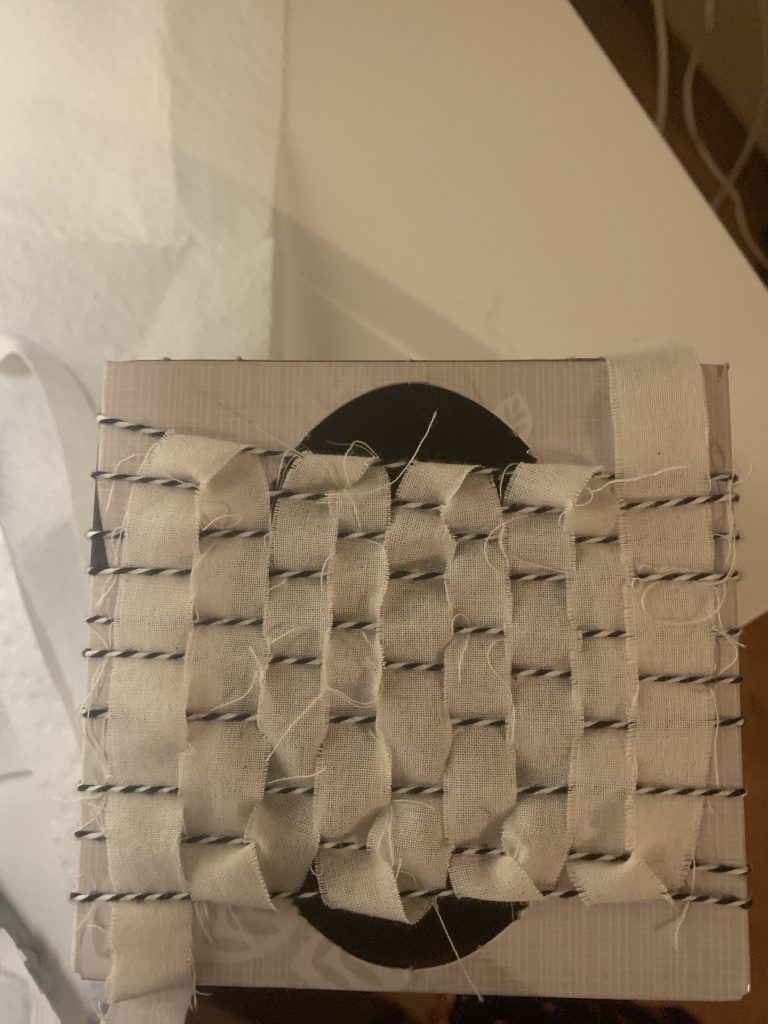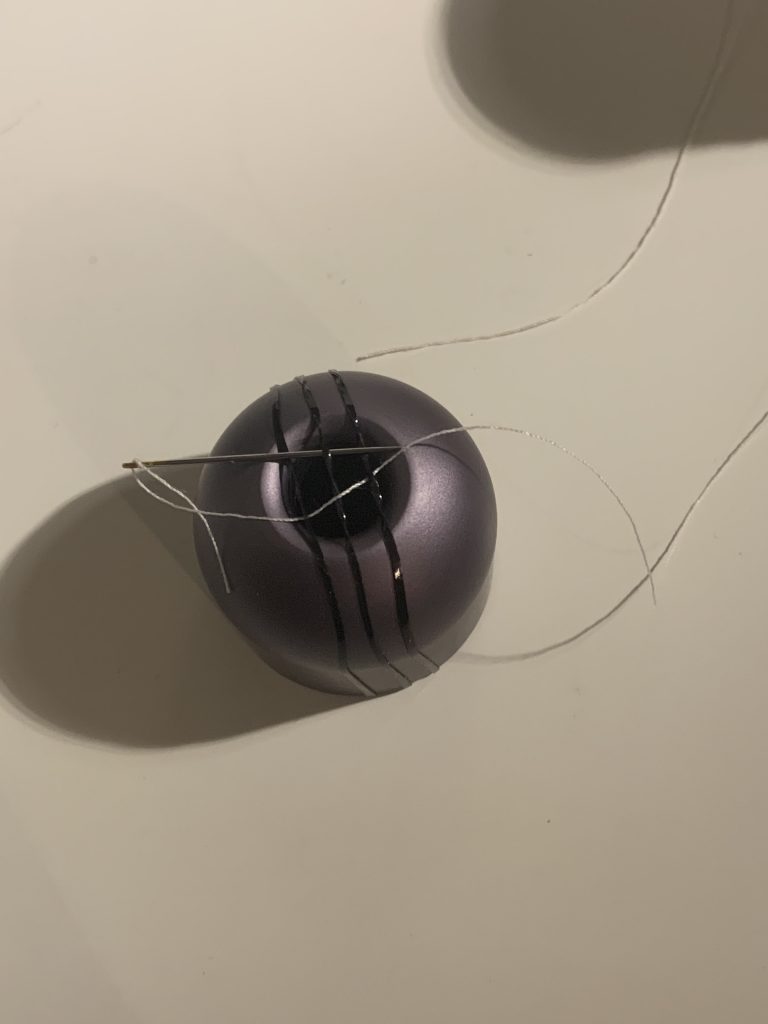When working on the three weavings, I decided to utilize the tissue box, pen-holder, twine, and thread I had originally discovered in my scavenger hunt. In addition, along with a few other warping and wefting materials, I later discovered a miniature statue of a figure with a raised arm and a lowered arm, so I wanted to see if I could exploit the space between the arms to create a loom.
The easiest weaving to create was the tissue box cloth weaving. I first tried experimenting with wefting with a taped-together paper towel strip, however, given how tight the strings were on the loom, I discovered that it was not ideal to do so as the taped-sections kept getting caught as I was sliding the strip through the strings. I then decided to use a large strip of cloth as it was consistently thin at all points, making it very easy to slide through the strings. I’d used twine for the warping as well. This weaving took about an hour to do, including the experimentation, and below is the final result.

A slightly harder weaving to create was the pen-holder weaving. When looking at the pen-holder, I had the idea to warp it using elastic hair ties, which I stretched taut over the hole of the pencil holder. As for wefting, I knew I had to use an extremely thin material, as the hole was very small, so I chose white thread, and used a needle to push the thread through the warp elastics. This was tricky because the thread was so fine that I had to pay extra attention to make sure I wasn’t making a mistake with wefting, and I had to pull a large amount of thread through the ends of the loom because I wasn’t sure how much I’d ultimately need, making it easy to tangle the thread. Below is the final result after 20-30 minutes.


Finally, the most difficult weaving, and the most interesting one, was my statue weaving. I spent about 45 minutes figuring out how to warp across the arms of the statue, and I’d first attempted to cover just the left shoulder portion. However, since I wanted to use the hair tie elastics for warping because of the tautness they brought to the loom, the elastics kept sliding off when I tried wrapping them around just the bent arm. In addition, I discovered that thread wasn’t an ideal wefting material for this loom because there was so much space between the elastics, and I would need too much thread to cover a relatively large space, making it easy to make a mistake. After much trial and error, I discovered that I should stretch the elastics over the right portion of the statue and pinpointed individual places where I knew they wouldn’t slip, and I used twine for wefting. Below is my finished result.

Overall, I discovered that the ‘ideal’ thickness for a weft material and warp material are relative to the size of the “hole” or space in the loom, and that the weft material should be equivalent to or thinner than the thickness of the warp material so that it can more easily be wefted and errors can be spotted easier. I also discovered twine to be a versatile item for both warping and wefting, and I discovered I enjoy working with finer materials on smaller weavings, rather than with thicker or larger materials on a larger loom.
